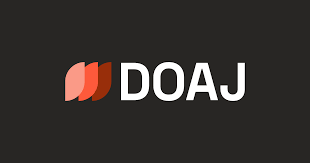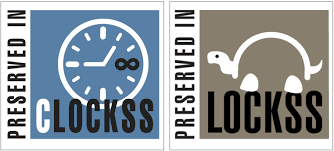COPPER COINS OF THE PRINCIPALITY OF ANTIOCH (1103 – 1130): PHYSICO-CHEMICAL ANALYSIS
DOI:
https://doi.org/10.24919/2519-058X.36.339342Abstract
The purpose and scientific novelty of the article. This article investigates the development of coin minting in the Crusader states, with a particular focus on the Principality of Antioch, during the first third of the 12th century. For the first time, the authors have conducted a comprehensive physicochemical analysis of copper coins from the Principality of Antioch, utilizing X-ray fluorescence spectroscopy, an MMP-2P model optical metallographic microscope, and a spark optical emission spectrometer Solaris CCD Plus GNR. Сonclusions. We conclude that the copper coins were struck on coin flans produced by casting. All the coins contain lead (Pb). Lead (Pb) was widely used in copper alloys in the Levant during the 11th–12th centuries. Taking into account the uniform technology used for producing flans for all coin types and the use of an alloy with a high lead (Pb) content, the authors conclude that a single mint operated in the Principality of Antioch. The consistent presence of lead (Pb) in all analyzed samples of Antiochene copper Crusader coins strongly suggests that lead was deliberately added during the melting process. After casting, the flans underwent further mechanical processing, including the removal of the solidified gating system and the remelting of defective pieces. Only then were the coins struck using a manual minting technique.
A comparative analysis of the coins of the Principality of Antioch and those of the Seljuks of Syria indicates that the addition of lead (Pb) to the coin alloy was not a practice at the Antiochene mint prior to the Crusader occupation. Significant variations in the content of the primary elements in the coin alloy within a single coin type suggest the use of diverse raw materials in alloy production.
Comparing the results of X-ray fluorescence spectroscopy and optical emission spectrometry, it is important to note that the former allows for more accurate determination of the chemical composition of a metal object, as the assessment is based on radiation from a larger surface area. Furthermore, X-ray fluorescence spectroscopy does not damage the surface of the studied coin.
Keywords: Principality of Antioch, Crusades, Oriental coins, follis, fals, dirham, numismatics, coin minting, mint, physicochemical analysis.
References
Al-Biruni. (2011). Sobraniye svedeniy dlya poznaniya dragotsennostey (Mineralogiya) [Collection of information for the knowledge of jewelry (Mineralogy).]. 2-ye izd., dop. i ispr. S.-Peterburg. [in Russian].
Album, S. (2020). Checklist of Islamic Coins, 3rd edition, STEPHEN ALBUM RARE COINS, Santa Rosa. [in English].
Al-Saad, Z., & Rababah, M. (2020). A systematic scientific analysis for the detection of forged copper based coins. Scientific culture, 6 (2), 11–22. DOI: 10.5281/zenodo.3724842 [in English].
Boiko-Haharyn, A., & Korpusova, I. (2017). Monetno-vahovi zlyvky hryvni ta yikh tohochasni pidrobky z kolektsii Odeskoho arkheolohichnoho muzeiu [Coin-weight hryvnia ingots and their counterfeits from the collection of the Odessa Archaeological Museum]. Zapysky otdela numyzmatyky y torevtyky Odesskoho arkheolohycheskoho muzeia, 3, 120–132. [in Ukrainian].
Classical Numismatic Group – Electronic Auction 350, lot.650, 6 May 2015. URL: https://cngcoins.com/Coin.aspx?CoinID=284673# [in English].
Crosera, M., Baracchini, E., Prenesti, E., Giacomello, A., Callegher, B., Oliveri, P., & Adami, G. (2019). Elemental characterization of surface and bulk of copper-based coins from the Byzantine-period by means of spectroscopic techniques. Microchemical Journal, 147, 422–428. DOI: 10.1016/j.microc.2019.03.025 [in English].
Gitler, H., & Ponting, M. (2006). Chemical Analysis of Medieval Islamic Coin Dies. The Numismatic Chronicle, 166, 321–326. [in English].
Heidemann, S. (2002). Die Renaissance der Stadte in Nordsyrien und Nordmesopotamien: stadtische Entwicklung und wirtschaftliche Bedingungen in ar-Raqqa und Harran von der Zeit der beduinischen Vorherrschan (11.Jh.) bis zu den Seldschuken (12.Jh.). Leiden; Boston; Koln : Brill. [in German].
Hendy, M. F. (1999). Catalogue of the Byzantine Coins in the Dumbarton Oaks Collection and in the Whittemore Collection, Vol. 4, Alexius I to Michael VIII 1081–1261. Washington, D.C. [in English].
Inberg, A., Ashkenazi, D., Cohen, M., Iddan, N., & Cvikel, D. (2018). Corrosion products and microstructure of copper alloy coins from the Byzantine-period Ma'agan Mikhael B shipwreck, Israel. Microchemical Journal, 143, 400–409. DOI: 10.1016/j.microc.2018.08.033 [in English].
Indutny, V., Pirkovich, K., & Dyshlova-Hrynyuk, V. (2024). Using an X-RAY fluorescence analyzer to prove the authenticity of the silver coins. The Ukrainian Numismatic Annual, (8), 316–330. DOI: 10.31470/2616-6275-2024-8-316-330 [in Ukrainian].
Jonsson, E. (2018). Metal analyses of Viking-Age coins. Metal analyses of coins, 1, 1-30. [in English].
Kropivnyi, V. M., Orlyk, V. M., Kuzyk, O. V., & Kropivna, A. V. (2023). Fizyko-khimichnyy analiz ob'yektiv istoryko-kulʹturnoyi spadshchyny [Physical and chemical analysis of objects of historical and cultural heritage]. Kropyvnytskyi: CNTU. [in Ukrainian].
Markou, E., Charalambous, A., & Kassianidou, V. (2014). pXRF Analysis of Cypriot Gold Coins of the Classical Period. American Journal of Numismatics, 26, 33–60. [in English].
Metcalf, D. M. (1995). Coinage of the Crusades and the Latin East in the Ashmolean Museum. Oxford, RNS, London. [in English].
Metcalf, D. M. (2006). Six Unresolved Problems in the Monetary History of Antioch, 969 – 1268. East and West in the medieval Eastern Mediterranean, 1, 283–318. [in English].
Miles, G. C. (1965) The circulation of Islamic coinage of the 8th-12th centuries in Greece. Congresso int. di Numismatica, Roma, 1961, (vol. 2, pp. 485–498). Auti, Rome. [in English].
Orlyk, M., & Prokhnenko, I. (2023a). Imitation of the denarius of Octavian Augustus of Mala Kopanya type. Skhidnoievropeiskyi Istorychnyi Visnyk – East European Historical Bulletin, (29), 8–21. DOI: 10.24919/2519-058X.29.292954 . [in English].
Orlyk, M., & Prokhnenko, I. (2023b). Imitatsii rymskykh denariiv Roska Fabata z Maloi Kopani ta yii okolyts [Imitations of roman denarii of Rosca Fabata from Malaya Kopanya and its surroundings]. The Ukrainian Numismatic Annual, (7), 40–53. DOI: 10.31470/2616-6275-2023-7-40-53 [in Ukrainian].
Orlyk, M., & Prokhnenko, I. (2024). Coin and material “hoard” from Bakta village, Berehove district, Zakarpattia oblast (Seiposondomb tract): attribution of the find. The Ukrainian Numismatic Annual, (8), 88–103. DOI: https://doi.org/10.31470/2616-6275-2024-8-88-103 [in English].
Orlyk, V. (2016). A Coin Hoard of Pre-Reform Shillings of the Grand Master Michael Küchmeister von Sternberg Found in Chernihivschyna. Acta Archaeologica Lodziensia, 62, 93–97. [in English].
Orlyk, V. (2021). Coins in Byzantine Style with the Latin Letters R-E-X. The Numismatic Chronicle, 181, 233–246. [in English].
Orlyk, V. M. (2011). Do pytannya zapochatkuvannya monetnoho karbuvannya v derzhavakh khrestonostsiv (na prykladi Edesʹkoho hrafstva) [On the question of the initiation of coinage in the Crusader states (on the example of the Edessa County)]. Spetsialni istorychni dystsypliny, 18, 157–163. [in Ukrainian].
Orlyk, V., & Callataÿ, F. (de) (2024.). A New Mithridatic Mint for the Bronzes with the Legend ΣAMIΣOΗΣ. Numismatic Chronicle, 184, 1–12 [in English].
Phillips, M. (2022). А coin of Bohemond I of Antioch overstruck by Tancred. The Ukrainian Numismatic Annual, (6), 206–216. DOI: https://doi.org/10.31470/2616-6275-2022-6-206-216 [in English].
Ponting, M. (2003). From Damascus to Denia, the scienti fic analysis of three groups of Fatimid period metalwork (11th–early 12th century AD). Historical Metallurgy, 37 (2), 85–105. [in English].
Schindel, N. (2023). The Beginning of Crusader Coinage in Northern Syria. Numismatic Chronicle, 183, 297–312. [in English].
Schlumberger, G. (1954) Numismatique De L'Orient Latin. Graz, 1954 reprint of Paris, 1878 original. Two Volumes (1 of text, 1 of plates of line drawings). Green cloth. [in French].
Smirnova, O. I. (1963). Katalog monet s gorodishcha Pendzhikent [Catalogue of coins from the Penjikent settlement]. Moskva. [in Russian].
Šmit, Ž., & Šemrov, A. (2025). Analysis of Hungarian silver coinage of the 11th-13th centuries, held in the National Museum of Slovenia. Archeometriai Műhely, 22 (3), 223–236. DOI: 10.55023/issn.1786-271X.2025-017 [in English].
Spufford, P. (1988). Money and its use in medieval Europe. Cambridge – London – New York – New Rochelle – Melbourne – Sydney: Cambridge University Press. [in English].
Stos-Fertner, Z., & Florkowski, T. (1975). Application of radioisotope X-RAY fluorescence analysis for the determination of heavy metal impurities in Kufic silver coins. Cracow. [in English].
Van Ham-Meert, A., Rademakers, F.W., Gyselen, R., Overlaet, B., Degryse, P., & Claeys, P. (2020). Sasanian copper and billon coins from the collections of the Royal Museums of Art and History, Brussels, Belgium-insights using semi-quantitative analysis by μXRF, Archaeological and Anthropological Sciences, 12, article number 239. DOI: 10.1007/s12520-020-01191-2 [in English].
Yahalom-Mack, N., Langgut, D., Dvir, O., Tirosh, O., Eliyahu-Behar, A., Erel, Y., et al. (2015). The Earliest Lead Object in the Levant. PLoS ONE 10(12): e0142948. DOI: 10.1371/journal.pone.0142948 [in English].
Downloads
Published
How to Cite
Issue
Section
License

This work is licensed under a Creative Commons Attribution-NonCommercial-NoDerivatives 4.0 International License.





